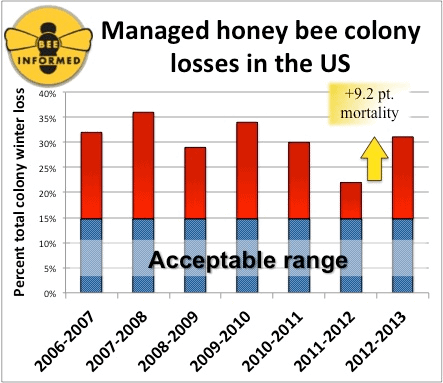 |
| Baskets full of bright orange pollen at the Dmitry hive. |
Typically a late installation of bees will put a new hive at a disadvantage. It can take 6-8 weeks for the bees to draw out enough comb needed to store the nectar and pollen as well as to make space for the queen to lay her eggs. By that time our area's spring nectar flow will be winding down, leaving the bees struggling for space and the hive weak in population.
My plan was to add a third hive this season to replace the loss of the Sasha hive, deciding to purchase a package of bees with a Russian queen instead of using my own bees as I wanted them available to add to and further strengthen the weaker Dmitry hive. And even though I have two boxes of drawn comb available that would help the hive begin with a heavy advantage, there is no estimate on when the package would arrive so I've decided to leave the apiary at the current two hives for this season.
Here is a short video of the OV hive as bees from both hives zoom in and out on their way to bring back pollen and nectar. I really enjoy standing there while they fly all around me, watching their flight paths to see in which direction they are foraging. Also visible are the large quantity of bees fanning at the entrance. Fanning draws out the warm air out of the hive and is mostly performed when abundant amounts of nectar are being brought in. Workers of all ages do this task but mainly young bees, less than 18 days old do the fanning, especially on hot days.
Fanning helps to circulate the air through the hive and to:
- regulate the hive's humidity at a constant 50 percent
- reduce the level of carbon dioxide (CO2)
- regulate brood temperature
- evaporate water carried into the hive to reduce internal temperatures
- evaporate excess moisture from unripened honey, which will cool or humidify the hive as it evaporates
- keep wax from melting as temperatures climb inside the hive.
Another type of fanning helps to spread the worker bee's pheromones. In this fanning the bee's abdomen is raised as the pheromone is secreted from a gland located near the tip of the abdomen. This pheromone has a sweet-smelling, lemony odor and is used to guide other bees toward the fanners. This is commonly seen:
- when bees are disoriented
- when a hive is opened that is queenless or has a virgin or newly mated queen, or
- when a swarm begins cluster formation.
The OV hive had this type of fanners today which has me wondering if the hive is preparing to swarm. Bees naturally perpetuate the species by splitting and swarming but a swarm weakens a hive and brings about a whole set of considerations that I'll address at another time...
We've had much rain lately, and today was certainly humid so the fanning could have been more for that reason than for a pending swarm. Nevertheless, I'll plan to cull the population of the OV hive in the next few days by supplementing the Dmitry hive just to be on the safe side.




